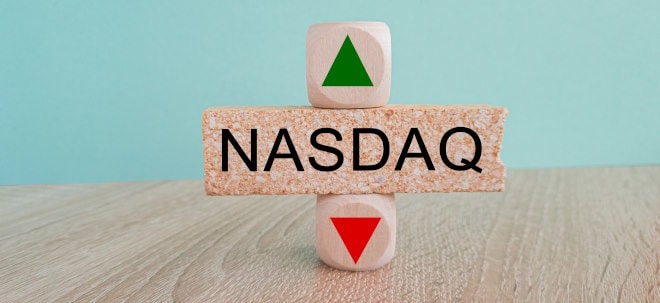Cashed-up junior has glittering prospects
Wednesday, 28 December 2011
WITH $A43 million in the bank, four projects in the pipeline and a preference for acquisitions over greenfields exploration, Kentor Gold is doing its best to stand out from the junior pack. By Imelda Cotton - RESOURCESTOCKS*
For Queensland-based Kentor Gold, the cloudy economic period of 2008-09 had a unique silver lining which helped kickstart its beginnings and set it apart from its junior league competitors.
Listed on the Australian Securities Exchange in 2005 with the aim of making new discoveries on its leases in the Kyrgyz Republic in central Asia, Kentor had commenced a corporate rethink on its approach to mining success just prior to the global financial crisis and after its initial exploration efforts failed to uncover anything material.
In 2007, the company abandoned its original greenfields exploration strategy in favour of project acquisition and development and used market conditions created by the crisis to amass its maiden portfolio.
Today, Kentor has four core projects – three in Australia and one in the Kyrgyz Republic – at various stages of development scheduled to be rolled out between 2012 and 2014, putting it in a category not shared by many other juniors.
“It is quite unusual for a company of our size to have four strong projects on the go at the same time,” said managing director Simon Milroy, who was appointed in 2007 to spearhead the new strategy.
“Our Australian projects are located on granted mining licences where there has been historical production, so the normal permitting and native title issues that local exploration companies face do not exist, meaning we can move into production on all of them quite quickly.
“The GFC was a fantastic opportunity for us to acquire these good strong assets at discount prices.
“Struggling companies worldwide were forced to sell off their assets at prices well below replacement cost and we were financially well-positioned to take advantage of that.”
One of Kentor’s first acquisitions – and one of its larger, potentially more profitable projects – was the advanced, high-grade Andash copper-gold asset in the northwest of the Kyrgyz Republic, within the Tien Shan major gold belt which stretches across central Asia.
In December 2009, the junior outlayed just $US15 million to purchase an 80% stake in the existing mine, including a fleet of mining and construction equipment, when the project’s previous owner ran into financial trouble.
The remaining 20% is held by the pro-mining Krygyz government.
Milroy said Andash would be one of the world’s lowest-cost gold mines, located in a highly prospective yet inherently challenging environment.
The company is targeting a 2013 start-up with average annual production of 70,000 ounces of gold and 7400 tonnes of copper over an initial six-year mine life.
“The Tien Shan belt is a very rich province which has been subject to a huge degree of historical exploration,” Milroy said.
“All the easy-to-find orebodies were identified very early on but few were exploited due to the region’s past political instabilities.
“That has left the market with a host of known orebodies waiting to be brought into production.
“It can be a tough place to operate in for a junior but we are fortunate to have an executive director who continues to reside there after 14 years, speaks the local language and has built a local team to help advance Andash and other regional opportunities.
“There have been some delays with our work to date due to social issues but we expect to reach an agreement with the local community by year end, enabling us to start our 12-month construction program in early 2012.
“The Kyrgyz government has a very pro-mining stance and we are confident that will contribute greatly to resolving the issues we face.”
While Kentor awaits the outcome in the Kyrgyz Republic, it is forging ahead with its Australian projects, the Burnukura and neighbouring Gabanintha gold projects in Western Australia and the Jervois base metals project in the Northern Territory – acquired as part of an offmarket takeover of gold and base metals company Jinka Minerals in May.
“Jervois is essentially an overlooked copper project and was what initially attracted us to Jinka,” Milroy said.
“The mine has an initial inferred JORC resource estimate of 8.8 million tonnes at 1.3 per cent copper for 113,000 tonnes contained copper plus silver and gold credits and is a very good grade for an open pit copper project in this part of the world.”
The $12.8 million acquisition was funded from cash in the bank raised in December 2010 and according to Milroy, demonstrates the “power of cash” in an uncertain economy.
“The vendors were after a quick sale and the fact that we could offer a fast, clean cash deal was a big attraction,” he said.
“We now have a cash balance of $43 million, which should be sufficient to bring Burnukura and Andash into production.
“Whatever happens in the market, we have substantial cash reservesto go ahead with our plans and that is a pretty unique position for a junior to be in.”
Three weeks after acquiring Jinka, Kentor announced an initial inferred gold resource at Burnukura of 10.6Mt at 1.5 grams per tonne gold for a total of 516,000oz at a 0.5gpt cut-off, including a high-grade component of 3.2Mt at 2.9gpt for 298,000oz at a 1.5gpt cut-off.
The company is now working on restarting the Meekatharra-based operation, originally placed on care and maintenance in 2009, from an open pit and associated processing plant in time for a mid-2012 startup.
Key to the restart will be the commissioning of a 1Mtpa heap leach circuit bought in June for $1.3 million to treat the lower-grade ore, while the highest-grade material will be fed through the existing carbon-in-pulp circuit, which is being expanded and converted to a carbon-in-leach circuit.
“Burnukura was most recently operated as an underground mine extracting the hard ore but high cash costs eventually forced its closure,” Milroy said.
“We are planning to mine the softer oxide ore by open pit mainly because it is simple and cheap to do in a $US1600 per ounce gold environment, there is a generous resource available and this approach will give us a much higher throughput rate.
“We are currently putting the finishing touches to the financial model and feasibility study and expect to make an announcement regarding final production, capital and operating costs by year end.”
While Burnukura will transform Kentor from developer to producer, it is the much-larger Andash, with its potential for $100m free cashflow per year, and the lesser-explored Jervois that Milroy said would put Kentor on the map.
“Jervois is at a much earlier stage than our other projects but we feel it has the potential to be the largest and most profitable in the long run,” he said.
“The historical drilling and work we have done so far has focused on four main orebodies but we know there are outcropping copper occurrences over a 12 kilometre strike length and a host of additional prospective areas that have not yet been investigated at depth.
“It is unlikely we will find anything as strong as Andash from a cashflow perspective but there is no doubt that Jervois has the potential to be larger from a resource perspective than any of our other assets.
“We believe we are in the early stages of understanding a large mineralised system with the clear potential to be a major base and precious metals mine.
“That said, Andash remains our main focus – it is fully funded and ready to go.
“Our number one priority is to resolve the community issues there and forge ahead with development for a 2013 start-up.”
http://www.miningnews.net/storyview.asp?storyid=2493726 |


 Thread abonnieren
Thread abonnieren

